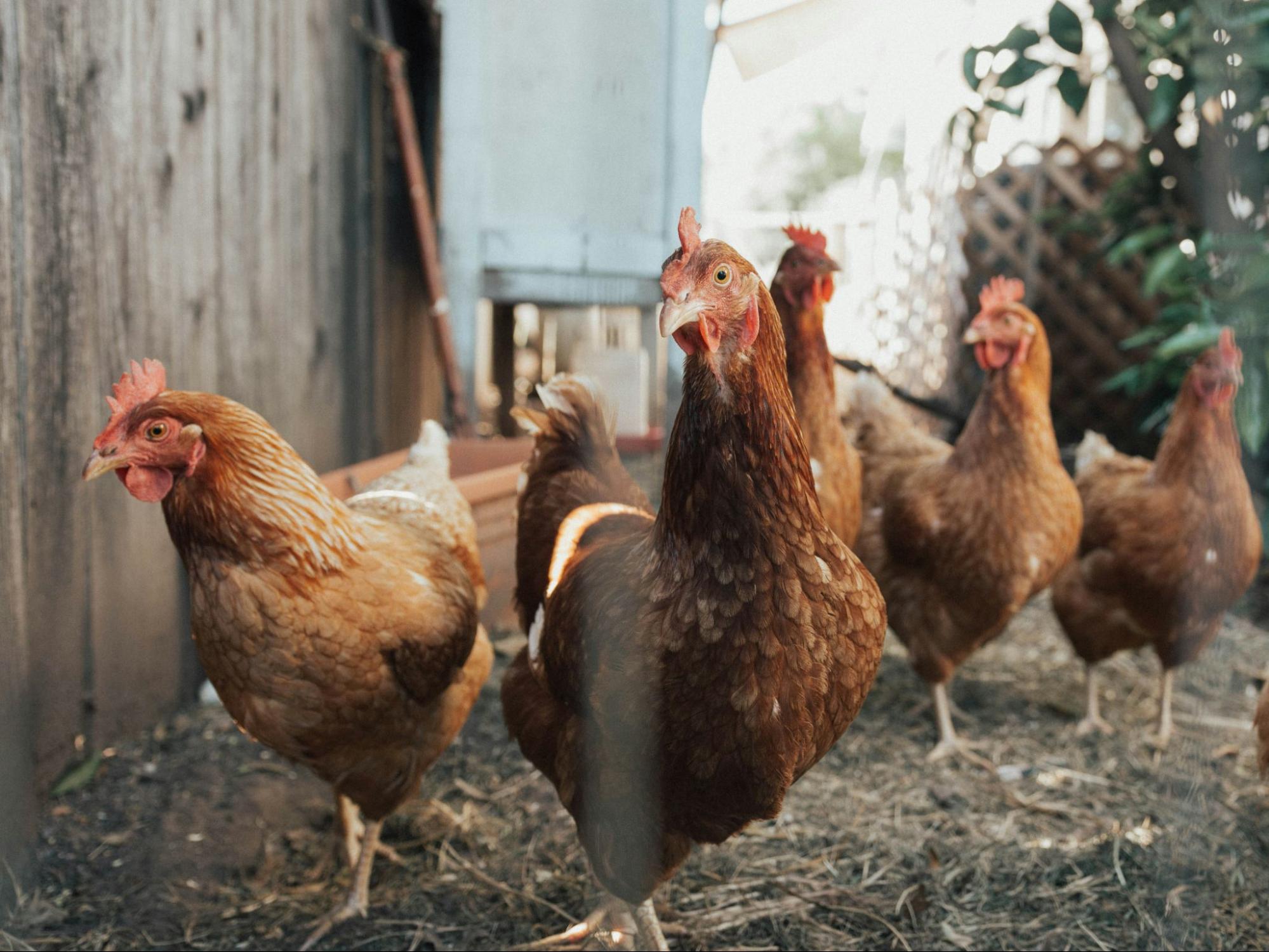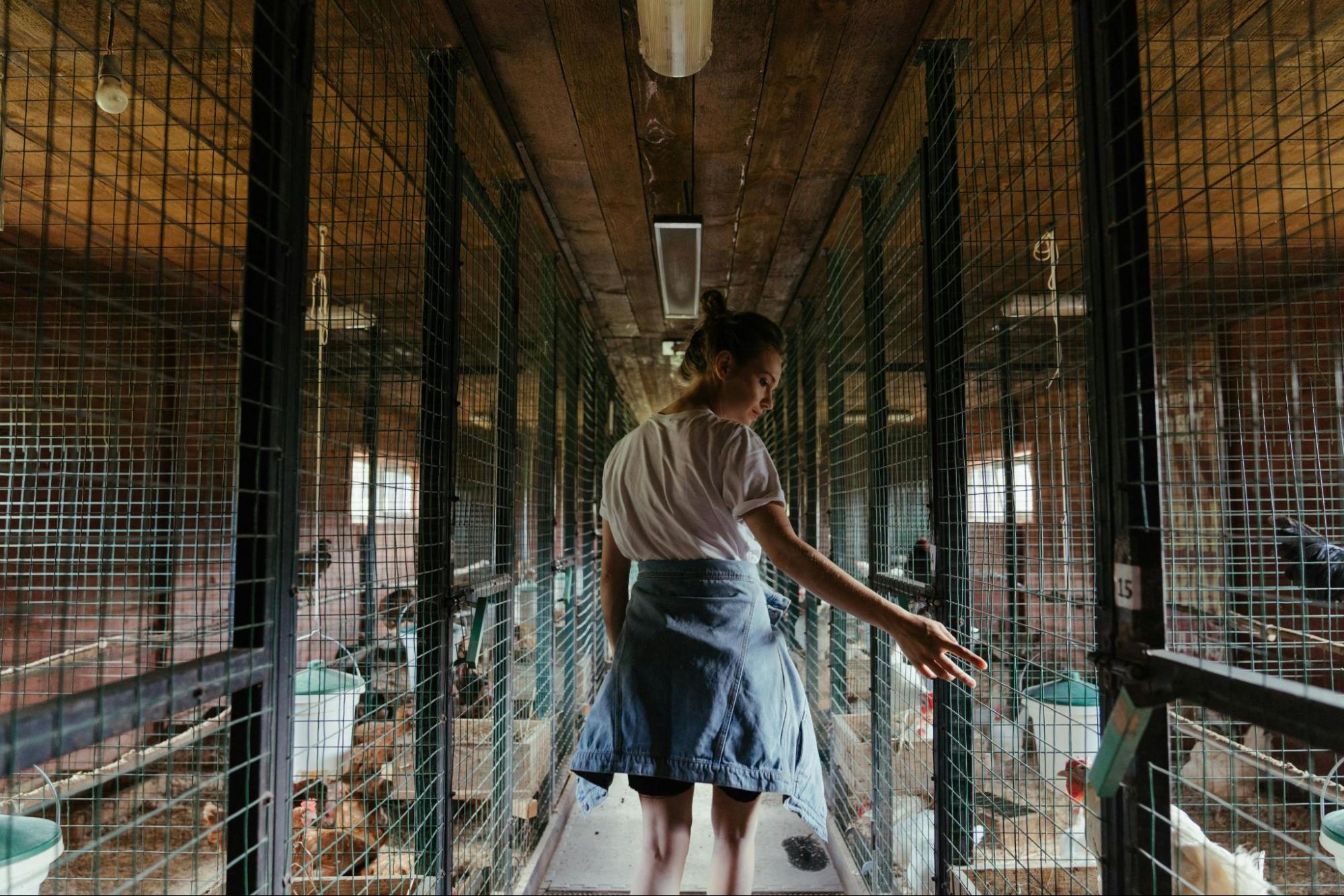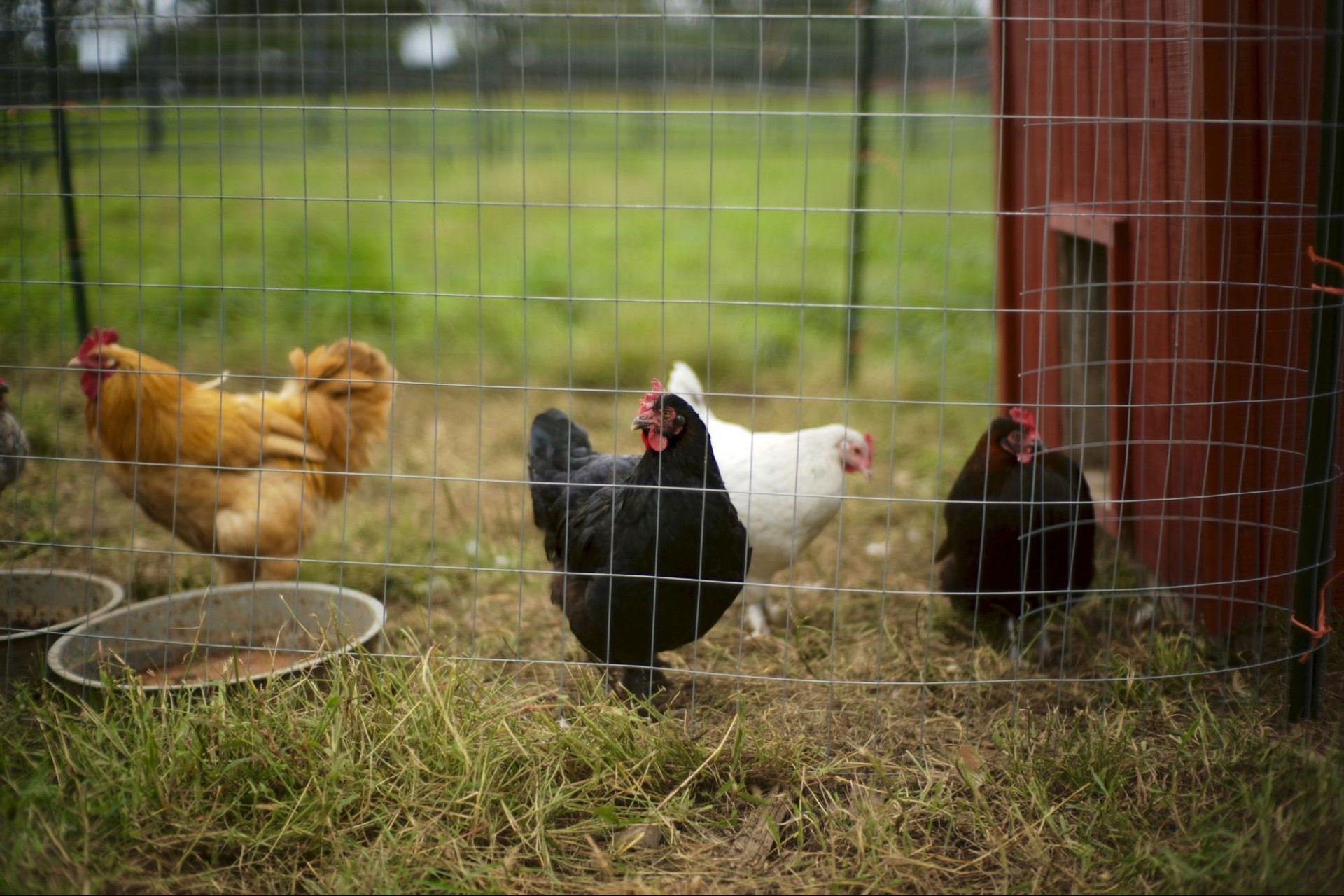An Overview of Marek’s Disease in Chickens
Marek’s disease is one of the most common health issues chickens face. It’s a fast-spreading viral infection in chickens that can occur in many different forms. As with all chicken diseases and illnesses, it’s important to know the clinical signs, symptoms, and prevention tactics for Marek’s disease.
Our comprehensive overview offers essential insights into Marek's disease. This guide will equip you with the necessary tools to safeguard your flock against this common poultry ailment.
What Is Marek’s Disease?
Marek's disease virus (MDV) comes from a herpes virus called Alphaherpesvirinae. Known as a chicken disease, it can also infect quail and, on rare occasions, turkeys. Marek’s is most common in younger chickens between three and 30 weeks old.
This highly contagious viral disease can manifest in four distinct forms, each targeting different parts of the body and presenting unique symptoms. It's not uncommon for an infected chicken to exhibit more than one form of the disease simultaneously.
Cutaneous (Skin) Form
The cutaneous form, while primarily affecting the skin, hints at the virus's extensive impact on the bird's overall condition. This form necessitates strict biosecurity measures to prevent the spread of the virus through direct contact and environmental contamination. Effective care includes maintaining clean and well-ventilated living conditions to minimize dust and dander accumulation.
Ocular (Eye) Form
The ocular form brings to light the importance of constant vigilance for signs of eye health issues. Prompt detection and supportive care can help manage the disease's impact on vision, though specific treatments may be limited. Maintaining the overall health of the chicken through nutrition and care is beneficial in managing this form.
Visceral (Internal Organs) Form
Regarded as the most severe, the visceral form's effect on internal organs often leads to critical outcomes. This form emphasizes the importance of vaccination as a preventive measure. Administering vaccines to chicks at an early age is a key measure in decreasing the occurrence of this devastating form
Neural (Nerves) Form
The neural form targets the chicken's nervous system, particularly the peripheral nerves. It leads to an enlargement of the nerves, which can cause a range of neurological symptoms. This form is often what people think of when they hear “Marek’s disease” due to its distinctive clinical signs related to the nervous system.
|
Neuro Health Tip: Use varied perches to keep chickens active, supporting nerve health and resilience against Marek's neural form. |
How It Spreads
Why is it important to know how Marek's disease spreads among poultry flocks? Recognizing the transmission methods is key to implementing effective strategies that protect the flock's health.
Airborne Transmission: Dust and Dander
The primary mode of Marek's disease spread is through airborne particles, specifically dust and dander from infected birds. These particles can contain the virus and become aerosolized, allowing it to be easily inhaled by healthy birds. The resilience of the virus in the environment means that it can infect birds over extended periods and distances.
Fomite Transmission: Clothing and Equipment
Marek's disease can also spread via fomites, which are objects or materials likely to carry infection, such as clothing, shoes, and farm equipment. When these items come into contact with the virus (e.g., in an infected coop) and are not properly sanitized before being used elsewhere, they can transfer the virus to healthy birds or other flocks.
Lifelong Carriers: The Role of Infected Birds
Chickens infected with Marek's disease become lifelong carriers of the virus, continuously shedding it into their environment through their feathers and skin. Even if a bird recovers from the initial symptoms, it will still pose a risk to any susceptible birds it comes into contact with. Due to the persistent nature of the virus in infected birds and the lack of a cure, euthanasia is often recommended to prevent further spread within a flock.

Symptoms of Marek's Disease
Marek's disease exhibits a range of symptoms, each related to the form of the disease affecting the chicken. These symptoms vary from visible tumors and paralysis to internal issues and eye conditions, making early detection and management challenging.
The table below provides an overview of the symptoms associated with each form of the disease to help you identify the disease's impact based on the affected area and specific symptoms observed.
|
Form of Marek's Disease |
Affected Area |
Symptoms |
|
Neural |
Nerves (legs, wings, neck) |
Tumors leading to paralysis |
|
Visceral |
Internal organs |
Weight loss, difficulty breathing, internal tumors |
|
Cutaneous |
Skin |
Enlarged feather follicles, wounds, scabs |
|
Ocular |
Eyes |
Graying of the eye, change in iris shape, blindness |
How to Protect Your Flock
While Marek's disease remains incurable, implementing preventive measures can significantly reduce the risk of infection within your flock. Below are strategies aimed at safeguarding your chickens from this pervasive disease.
Vaccination: The First Line of Defense
Vaccinating newborn chicks against Marek's disease is the most effective method to prevent the disease from taking hold. The vaccine should be administered as early as possible, ideally at the hatchery, to provide immunity before the chicks are exposed to the virus. This proactive step is crucial in areas where Marek's disease is prevalent and serves as the cornerstone of disease prevention efforts.
Maintaining Strict Hygiene Practices
Keeping your flock and their environment clean is essential in preventing the spread of Marek's disease and other pathogens. Maintain flock hygiene by doing the following:
- Regular cleaning. Establish a routine for cleaning and disinfecting the coop and surrounding areas. Use effective poultry disinfectants that are safe for birds but lethal to pathogens.
- Disinfect feeders and waterers. Feeders and watering systems should be cleaned and disinfected regularly to prevent the build-up of disease-causing organisms. This practice is particularly important if any bird shows signs of illness, as pathogens can easily spread through shared food and water.
- Nesting pad maintenance. Ensure that nesting pads are kept clean and dry. Replace or disinfect them frequently to minimize the risk of disease transmission among laying hens.
|
Dust Control Tip: Invest in air purifiers for areas where your chickens spend the most time. Reducing dust can lower the chances of Marek's disease virus spreading through dander and feather particles. |
Enhancing Nutrition and Stress Management
The overall health and immunity of your chickens play a critical role in disease resistance. Offering a balanced diet enriched with essential vitamins and minerals supports immune system health while managing stress levels ensure your birds remain resilient against infections. Avoiding overcrowding, maintaining consistent routines, and providing adequate environmental enrichment are effective ways to minimize stress within the flock.
Conducting Regular Health Monitoring
Keeping a vigilant eye on your chickens for any signs of illness can lead to early detection and management of potential health issues. Regular observations for behavioral, appearance, and productivity changes are essential. Collaborating with a poultry veterinarian for health checks and tailored advice can offer additional layers of security, enabling you to address Marek's disease and other health concerns promptly.

Common Misconceptions about Marek’s Disease
Despite the availability of a vaccine, misconceptions about prevention and treatment persist, complicating efforts to control the disease. Addressing these myths is crucial for effectively managing Marek's disease and safeguarding the health of poultry flocks.
Misconception 1: Only Young Birds Are Susceptible
While it's true that young birds are more susceptible due to their immature immune systems, Marek's disease can impact chickens of all ages. Older birds can also contract Marek's disease, especially if they are unvaccinated birds or if their immune systems are compromised.
Misconception 2: Marek's Disease Only Affects Chickens
While chickens are the primary hosts for Marek's disease, the misconception that the disease only affects chickens can lead to complacency among keepers of other poultry types. Marek's disease can also infect quail and, on rare occasions, turkeys.
Misconception 3: All Affected Birds Show Obvious Symptoms
Some infected chickens may be asymptomatic carriers, showing no visible clinical signs while still spreading the virus to other birds. This asymptomatic shedding can be particularly dangerous in flocks with unvaccinated birds or birds with compromised immunity, as it allows the disease to spread undetected.
Misconception 4: Mix Turkeys and Chicks Together to Prevent Marek's Disease
Some believe mixing turkeys with chicks can prevent Marek's disease, thinking chickens will naturally be exposed to the turkey herpes virus, thereby gaining protection. This approach does not confer protection against Marek's disease virus and risks exposing turkeys to chicken-specific diseases like Mycoplasma and Blackhead.
Misconception 5: Don't Vaccinate Birds So the Survivors Will Become Resistant
Genetic resistance to Marek's disease has not been successfully developed, and relying on natural selection can lead to significant losses without contributing to long-term resistance. Commercial chicken genetics companies would have utilized such resistance if it were a viable solution to prevent Marek's disease.
Misconception 6: Only Vaccinate a Few Birds, and the Vaccine Will Leak to Protect Others
The Marek's vaccine does not "leak" protection to unvaccinated flocks. Effective prevention requires that each chicken receives a full dose of the vaccine before exposure to Marek's disease virus. This strategy ensures the immune system of each bird is equipped to fight off clinical disease.
Misconception 7: Vaccines Are Harmful
Some worry that the Marek's disease vaccine might harm chickens, possibly making them ill. While improper handling of the vaccine (e.g., unsanitary mixing, reuse of needles) can introduce bacterial infections, when administered correctly, the vaccine is safe and crucial for preventing Marek's disease.
|
Storage Best Practice: Keep Marek's disease vaccines refrigerated and away from light until use. Proper storage is key to preserving vaccine integrity and effectiveness. |
Nurture a Healthier Flock
As with most chicken matters, knowledge is power—and Stromberg’s is here to help. We hope this overview of Marek’s disease in chickens helps you prevent the infection or catch the issue early. With the right information and equipment, you can provide the safest and healthiest home for your chickens.

